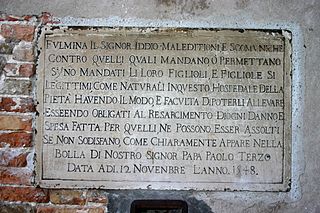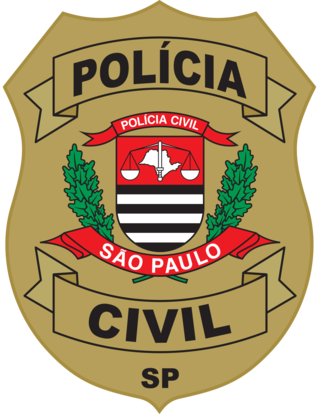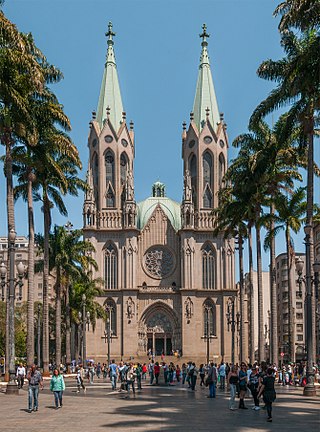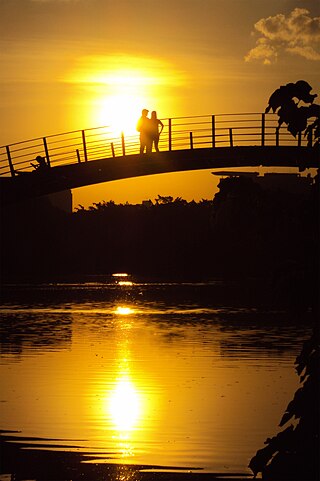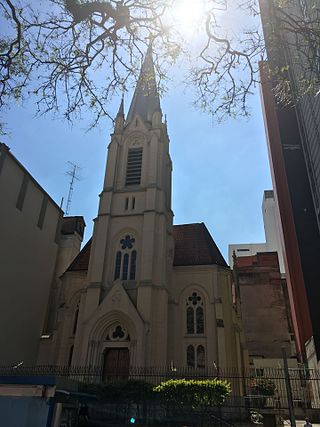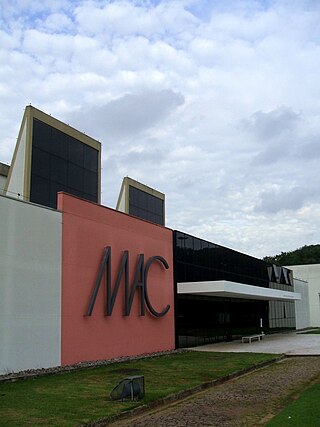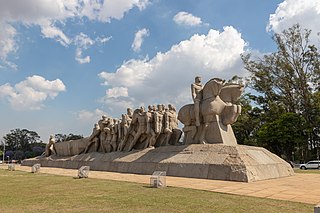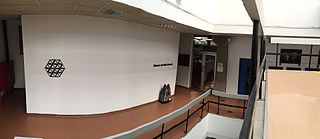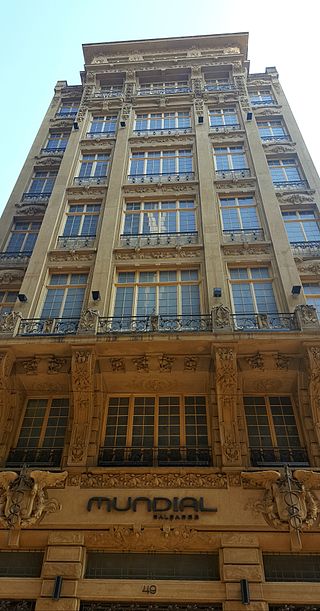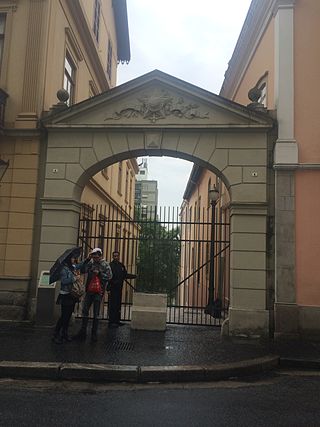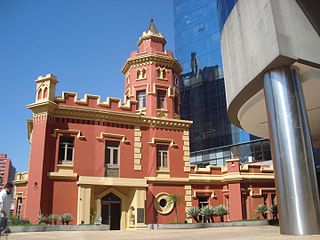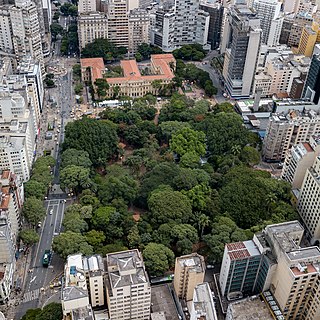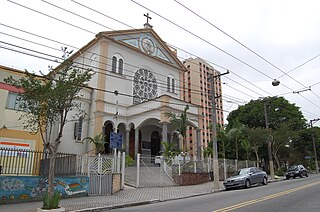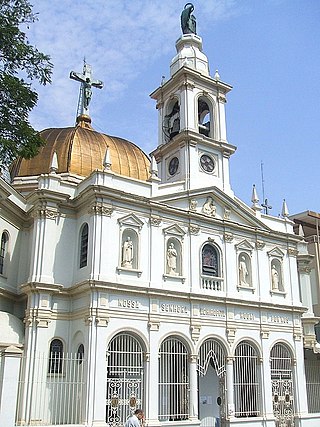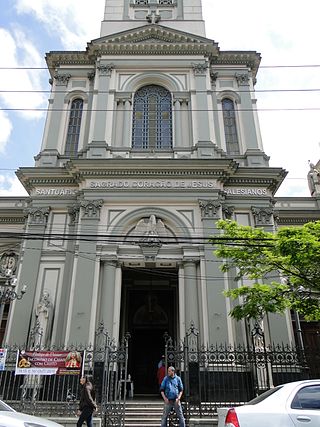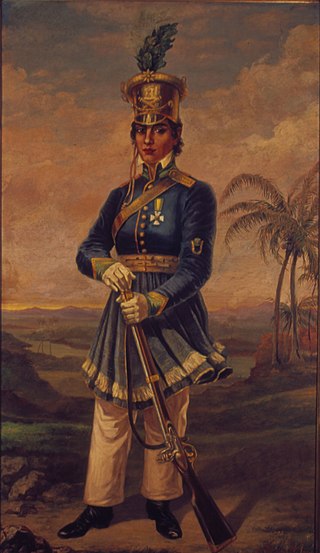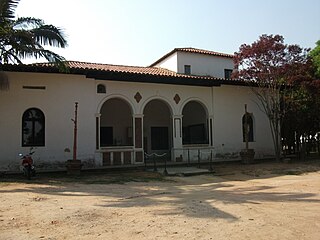100 Sights in São Paulo, Brazil (with Map and Images)
Legend
Premium Sights
Book tickets, guided tours and activities in São Paulo.
Guided Free Walking Tours
Book free guided walking tours in São Paulo.
Welcome to your journey through the most beautiful sights in São Paulo, Brazil! Whether you want to discover the city's historical treasures or experience its modern highlights, you'll find everything your heart desires here. Be inspired by our selection and plan your unforgettable adventure in São Paulo. Dive into the diversity of this fascinating city and discover everything it has to offer.
Sightseeing Tours in São PauloActivities in São PauloA rose garden or rosarium is a garden or park, often open to the public, used to present and grow various types of garden roses, and sometimes rose species. Designs vary tremendously and roses may be displayed alongside other plants or grouped by individual variety, colour or class in rose beds. Technically it is a specialized type of shrub garden, but normally treated as a type of flower garden, if only because its origins in Europe go back to at least the Middle Ages in Europe, when roses were effectively the largest and most popular flowers, already existing in numerous garden cultivars.
The Mário Pimenta Camargo Municipal Park, or People's Park, was inaugurated on 28 September 2008, in the district of Itaim Bibi, in the district of Chácara Itaim, in São Paulo, Brazil. The People's Park is referred to as the "Parque do Povo" in Portuguese.
3. Ibirapuera Park
Ibirapuera Park is an urban park in São Paulo. It comprises 158 hectares between Av. República do Líbano, Av. Pedro Alvares Cabral, and Av. IV Centenário, and is the most visited park in South America, with 14.4 million visits in 2017.
4. Fraternitas São Francisco de Assis
Giovanni di Pietro di Bernardone, known as Francis of Assisi, was an Italian mystic, poet, and Catholic friar who founded the religious order of the Franciscans. Inspired to lead a Christian life of poverty, he became a beggar and itinerant preacher.
5. Instituto Social Nossa Senhora de Fátima
Our Lady of Fátima is a Catholic title of Mary, mother of Jesus, based on the Marian apparitions reported in 1917 by three shepherd children at the Cova da Iria in Fátima, Portugal. The three children were Lúcia dos Santos and her cousins Francisco and Jacinta Marto. José Alves Correia da Silva, Bishop of Leiria, declared the events worthy of belief on 13 October 1930.
6. Circo Escola Grajaú
A circus is a company of performers who put on diverse entertainment shows that may include clowns, acrobats, trained animals, trapeze acts, musicians, dancers, hoopers, tightrope walkers, jugglers, magicians, ventriloquists, and unicyclists as well as other object manipulation and stunt-oriented artists. The term "circus" also describes the field of performance, training, and community which has followed various formats through its 250-year modern history. Although not the inventor of the medium, Newcastle-under-Lyme born Philip Astley is credited as the father of the modern circus.
7. Lar Nossa Senhora Aparecida
An orphanage is a residential institution, total institution or group home, devoted to the care of orphans and children who, for various reasons, cannot be cared for by their biological families. The parents may be deceased, absent, or abusive. There may be substance abuse or mental illness in the biological home, or the parent may simply be unwilling to care for the child. The legal responsibility for the support of abandoned children differs from country to country, and within countries. Government-run orphanages have been phased out in most developed countries during the latter half of the 20th century but continue to operate in many other regions internationally. It is now generally accepted that orphanages are detrimental to the emotional wellbeing of children, and government support goes instead towards supporting the family unit.
8. Mercadinho Zé do Norte
In economics, a market is a composition of systems, institutions, procedures, social relations or infrastructures whereby parties engage in exchange. While parties may exchange goods and services by barter, most markets rely on sellers offering their goods or services to buyers in exchange for money. It can be said that a market is the process by which the value of goods and services are established. Markets facilitate trade and enable the distribution and allocation of resources in a society. Markets allow any tradeable item to be evaluated and priced. A market emerges more or less spontaneously or may be constructed deliberately by human interaction in order to enable the exchange of rights of services and goods. Markets generally supplant gift economies and are often held in place through rules and customs, such as a booth fee, competitive pricing, and source of goods for sale.
9. Bar e Mercearia J. C. Zézito
A grocery store (AE), grocery shop (BE) or simply grocery is a retail store that primarily retails a general range of food products, which may be fresh or packaged. In everyday U.S. usage, however, "grocery store" is a synonym for supermarket, and is not used to refer to other types of stores that sell groceries. In the UK, shops that sell food are distinguished as grocers or grocery shops
10. Telefone Público
A payphone is typically a coin-operated public telephone, often located in a telephone booth or in high-traffic public areas. Prepayment is required by inserting coins or telephone tokens, swiping a credit or debit card, or using a telephone card.
11. Imagem Nossa Senhora das Dores
Our Lady of Sorrows, Our Lady of Dolours, the Sorrowful Mother or Mother of Sorrows, and Our Lady of Piety, Our Lady of the Seven Sorrows or Our Lady of the Seven Dolours are names by which Mary, mother of Jesus, is referred to in relation to sorrows in life. As Mater Dolorosa, it is also a key subject for Marian art in the Catholic Church.
12. Padaria Jardim Iporanga
A bakery is an establishment that produces and sells flour-based baked goods made in an oven such as bread, cookies, cakes, doughnuts, bagels, pastries, and pies. Some retail bakeries are also categorized as cafés, serving coffee and tea to customers who wish to consume the baked goods on the premises. In some countries, a distinction is made between bakeries, which primarily sell breads, and pâtisseries, which primarily sell sweet baked goods.
13. Polícia Civil - 101º Distrito Policial
The Civil Police of the State of São Paulo (PCESP) is the investigative judicial police of the state of São Paulo, Brazil, an organ of the public security system that is responsible, except for the specific competence of the Union, for the activities of judicial police and investigation of criminal offenses, except those of a military nature.
Wikipedia: Polícia Civil do Estado de São Paulo (PT), Website
14. São Paulo Museum of Art
The São Paulo Museum of Art is an art museum in São Paulo, Brazil. It is well known for the architectural significance of its headquarters, a 1968 concrete and glass structure designed by Lina Bo Bardi. It is considered a landmark of the city and a symbol of modern Brazilian architecture.
15. Terra Country Interlagos
A nightclub is a club that is open at night, usually for drinking, dancing and other entertainment. Nightclubs often have a bar and discothèque with a dance floor, laser lighting displays, and a stage for live music or a disc jockey (DJ) who mixes recorded music. Nightclubs tend to be smaller than live music venues like theatres and stadiums, with few or no seats for customers.
16. Vibra São Paulo
Vibra São Paulo is a music theatre in the Santo Amaro neighbourhood, city of São Paulo, Brazil. It opened in September 1999, with capacity for 7,000 people. Considered to be one of the largest indoor entertainment venues in Brazil and one of the largest in Latin America. The 60th anniversary of Miss Universe 2011 pageant was held on September 12 that year at the hall. It used to be called Credicard Hall in most of its history, but its name changed in October 2019 due to a naming rights partner. The theatre closed on March 31, 2021. On 1 April 2022, the reopening of the venue was announced under its new name Vibra São Paulo following an agreement between the new house manager, Opus Entertenimento, and the biofuel company Vibra Energia. The venue officially reopened in May.
17. Base Comunitária da Polícia Militar
The Polícia Militar do Estado de São Paulo is a military law enforcement agency of in the state of São Paulo, Brazil. It is the largest state police force in the country, with over 100,000 personnel in its ranks, in several battalions throughout the state as well as within the Greater São Paulo region which itself comprises 40 cities and towns.
18. Mirante do Vale
Mirante do Vale Building, commonly called Mirante do Vale, is a 170-metre (558 ft) office skyscraper located in São Paulo, Brazil, in the area of Downtown São Paulo and Vale do Anhangabaú. Constructed from 1959 to 1966, it was the tallest building in São Paulo for 54 years until 2022 when it was surpassed by Platina 220. Mirante do Vale was also the tallest in Brazil until 2014 when it was surpassed by Millennium Palace in Balneário Camboriú, Santa Catarina.
19. São Paulo Cathedral
The Metropolitan Cathedral of Our Lady Assumption and Saint Paul, also known as the See Cathedral, is the cathedral of the Roman Catholic Archdiocese of São Paulo, Brazil. Its current and seventh metropolitan archbishop is Dom Odilo Pedro Cardinal Scherer, appointed by Pope Benedict XVI on March 21, 2007, and installed on April 29 of the same year. The existing cathedral's construction, in a Gothic revival style, began in 1913 and ended four decades later. It was ready for its dedication on the 400th anniversary of the foundation of the then humble villa of São Paulo by Chief or Cacique Tibiriçá and the Jesuit priests Manuel da Nóbrega and José de Anchieta. Despite its Renaissance-style dome, the São Paulo Metropolitan Cathedral is considered by some to be the fourth largest neo-Gothic cathedral in the world.
20. Museu Paulista
The Museu Paulista of the University of São Paulo, commonly known as Museu do Ipiranga, is a Brazilian history museum located near the place where Emperor Pedro I proclaimed Brazil's independence on the banks of Ipiranga brook in the Southeast region of the city of São Paulo, then the "Caminho do Mar," or road to the seashore. It contains a huge collection of furniture, documents and historically relevant artwork, especially relating to the Brazilian Empire era.
21. Museu da Casa Brasileira
The Museu da Casa Brasileira (MCB), an institution of the Secretariat of Culture and Creative Economy of the State of São Paulo, dedicated itself until April 30, 2023 to the issues of Brazilian housing from the perspective of architecture and design. Over more than five decades of existence, it has become a national and international reference in these areas for promoting programs such as the MCB Design Award, a contest created in 1986 with the objective of encouraging Brazilian production in the segment, and the Casas do Brasil project, to rescue and preserve the memory of the diversity of living in Brazilians.
22. Edifício Itália
Edifício Itália is a 165 m (541 ft) tall 46-story skyscraper located in the República district, Central Zone of São Paulo, Brazil. Built from 1956 to 1965, it has a rooftop observation deck, open for tourists.
23. Luz Station
Luz Station is a commuter rail and intercity rail station in the Bom Retiro district of São Paulo, Brazil, serving RFFSA, the intercity rail network of Brazil, CPTM Line 7-Ruby, Line 11-Coral and Line 13–Jade (Airport-Express). It has subway connections to São Paulo Metro Line 1-Blue and ViaQuatro Line 4-Yellow via its underground metro station of the same name.
24. Praça Jardim Presidente
The city of São Paulo has several parks and environmental reserves. Between state and municipal parks, there are 106 areas spread across the cidade.Com all these parks The city of São Paulo has less than 12m² of green per inhabitant: below the recommended by the World Health Organization (WHO).
25. São Paulo Brazil Temple
The São Paulo Brazil Temple is the 19th constructed and 17th operating temple of the Church of Jesus Christ of Latter-day Saints. Located in the Brazilian city of São Paulo, it was the first Latter-day Saint temple built in South America, and the first to use a single story, single spire design. The spire is 101 feet tall. The intent to build the temple was announced on March 1, 1975, by church president Spencer W. Kimball at an area conference. A groundbreaking ceremony, to signify the beginning of construction, was held on March 20, 1976, conducted by James E. Faust.
26. Parque da Água Branca

Água Branca State Park is a park located in the district of Barra Funda, in the city of São Paulo, Brazil. The place has 136,765.41m², and is located on Avenida Francisco Matarazzo in the Água Branca neighborhood. Conceived by the Brazilian Rural Society (SRB), an entity representing Brazilian agriculture, the Park began to be formed in 1905 and was inaugurated on June 2, 1929 by the Secretary of Agriculture Dr. Fernando de Sousa Costa, responsible for providing new aspects to the animal industry, also creating the Department of Dairy Products of the Animal Industry. With the objective of hosting exhibitions and zootechnical tests, the park was created in a period when Avenida Água Branca had not even been paved. The park was listed in 1996 by Condephaat as cultural, historical, architectural, tourist, technological and landscape heritage of the state of São Paulo, and in 2004 by CONPRESP, for its historical, architectural and landscape-environmental value.
27. Igreja São Gonçalo
The São Gonçalo Church is a Catholic temple located in Dr. João Mendes Square, in the center of the city of São Paulo, headquarters of the Parish of Our Lady of the Assumption and São Paulo and the Japanese-Brazilian Personal Parish São Gonçalo.
28. Tietê Ecological Park
The Tietê Ecological Park is a park and an environmental protection area located in the floodplain of the Tietê River, under the administration of the CPP - Coordination of Parks and Partnerships, inserted in the Secretariat of Environment, Infrastructure and Logistics (SEMIL), of the Government of the State of São Paulo. Also known as Núcleo Eng. Goulart.
29. EE Professor José Vieira de Moraes
The Department of Education of the State of São Paulo (SEDUC-SP) is the state agency responsible for matters related to the education network in the state of São Paulo. It is one of the 25 secretariats that make up the Government of the State of São Paulo.
Wikipedia: Secretaria da Educação do Estado de São Paulo (PT), Website
30. Museu Anchieta
The Anchieta Museum is located in the Pátio do Colégio square, in downtown São Paulo, which is considered a place of collective memory for São Paulo and national education, having a collection of excellence for the history of education.
31. Independence or Death
The 1888 painting Independence or Death, also known as the Cry of Ipiranga is an oil on canvas painting by Pedro Américo, from 1888. It is the best known artwork representing the proclamation of the Brazilian independence.
32. Sé Square
Praça da Sé is a public space in São Paulo, Brazil. Considered as the city's central point, it is the point from where the distance of all roads passing through São Paulo are counted. The square was the location of many historical events in São Paulo's history, most notably during the Diretas Já movement. The name originates from the episcopal see of the city, the São Paulo Cathedral.
33. Monumento à Independência

The Monument to the Independence of Brazil is a granite and bronze monument located in the Independence Park in São Paulo, Brazil. It is also known as the Ipiranga Monument or the Altar of the Fatherland. The monument is located on the banks of the Ipiranga Brook, on the historic site where prince regent Pedro proclaimed the independence of the country on 7 September 1822.
34. Guarda Civil Metropolitana
The Civil Guard of the State of São Paulo was a uniformed corporation created on October 22, 1926 by Carlos de Campos, President of the State of São Paulo to carry out the ostensible policing of the urban areas of the state, ensuring public safety and the personal and patrimonial safety of citizens following the standard of the municipal guard created on the same date. Today it is considered the embryo of the Metropolitan Civil Guard of the state capital and of all the municipal guards of the cities of the interior.
Wikipedia: Guarda Civil do Estado de São Paulo (PT), Website
35. Parque da Juventude
The Dom Paulo Evaristo Arns Youth Park is a cultural, recreational and sports complex located in the North Zone of the city of São Paulo. In 2007, the third and final phase was completed. Its construction took place in the place where the old Carandiru Penitentiary Complex was located, a place historically marked by human rights violations, urban degradation and violence.
Wikipedia: Parque da Juventude Dom Paulo Evaristo Arns (PT), Website
36. Estação Pinacoteca
The Pinacoteca do Estado de São Paulo is one of the most important art museums in Brazil. It is housed in a 1900 building in Jardim da Luz, Downtown São Paulo, designed by Ramos de Azevedo and Domiziano Rossi to be the headquarters of the Lyceum of Arts and Crafts. It is the oldest art museum in São Paulo, founded on December 24, 1905, and established as a public state museum since 1911.
37. Praça da Bandeira
Praça da Bandeira is a street located in the district of República, in the center of the municipality of São Paulo. It is an association between Largo da Bixiga and Largo do Piques. Until the 1960s, it was a public space with gardens. Today, almost the entire area is cut by avenues, viaducts and walkways, also having a municipal bus terminal that serves several regions of the city.
38. Catedral Metropolitana Ortodoxa
The Orthodox Metropolitan Cathedral of São Paulo, also known as the Orthodox Cathedral of São Paulo, is a cathedral of the Greek Orthodox Church of Antioch, located at 1515 Vergueiro in Paraíso, Vila Mariana, São Paulo, Brazil. Dedicated to Paul the Apostle, it is home to the Antiochian Orthodox Archdiocese of São Paulo and All Brazil. It was constructed to serve the many Lebanese Brazilians of the Orthodox Christian faith who had been immigrating to Brazil since the late 19th century. It is one of the largest Eastern Orthodox cathedrals in the world, and a fine example of Byzantine Revival architecture.
39. Ema Gordon Klabin Cultural Foundation
The Ema Gordon Klabin Cultural Foundation is an art museum located in the city of São Paulo, Brazil. Officially established in 1978, it is a not-for-profit private institution, legally declared as an organization of federal public interest. It was created by the Brazilian collector and philanthropist Ema Gordon Klabin (1907–1994), with the purpose of preserving and displaying her art collection, as well as promoting cultural, artistic and scientific activities. The foundation is headquartered in Ema's former house in Jardins district, specially designed by architect Alfredo Ernesto Becker in the 1950s to hold her collection. The house is surrounded by a 4,000 square meters garden projected by Brazilian landscape architect Roberto Burle Marx.
Wikipedia: Ema Gordon Klabin Cultural Foundation (EN), Website
40. Museu Afro-Brasil
Museu Afro Brasil is a history, artistic and ethnographic museum dedicated to the research, preservation, and exhibition of objects and works related to the cultural sphere of black people in Brazil. It is a public institution held by the Secretariat for Culture of the São Paulo State and managed by the Museu Afro Brasil Association. The museum is located in Ibirapuera Park, a major urban park in São Paulo. The Manoel da Nóbrega Pavilion, designed by Oscar Niemeyer in 1959, houses the Museum. It holds around 6 thousands items and pieces including paintings, sculptures, photos, documents, and archives created between the 15th Century and the present day. The aggregation of pieces includes many works of the African and Afro-Brazilian cultural spheres, ranging from subjects and topics such as religion, labor, and art to the African Diaspora and slavery, whilst registering and affirming the historical trajectory and the African influences in the construction of the Brazilian society. The Museum also offers a diverse range of cultural and didactic activities, temporary expositions, and contains a theater and a specialized library.
41. Casa Bandeirista
The Bandeirista House of Itaim is an eighteenth-century building located at Avenida Brigadeiro Faria Lima, nº 3477, in the neighborhood of Itaim Bibi, in the city of São Paulo. The property was listed by CONDEPHAAT, in 1982, and by CONPRESP, in 1991. In 1997 the restoration project of the property was presented, but the works only began in June 2008. In 2019, the Casa Bandeirista Institute began to operate on site, which is a historical reference center led by a business group and a financial institution.
42. Vale do Anhangabaú
Vale do Anhangabaú is a region in the city center of São Paulo, located between the viaducts do Chá and Santa Ifigênia. It is a public space commonly characterized as park, where events have traditionally been organized, such as public demonstrations, political rallies, presentations and popular shows. It is considered the point that separates the Old City Center from the New City Center.
43. Evangelical Lutheran Church of São Paulo
The Evangelical Lutheran Church of São Paulo, also known as Martin Luther Church, is one of the headquarters of the Southeast Synod of the Evangelical Church of Lutheran Confession in Brazil, located near the Largo do Paiçandu, in the historic center of São Paulo. The temple was founded on December 25, 1908, being one of the main meeting places of the German community in the first half of the twentieth century.
Wikipedia: Evangelical Lutheran Church of São Paulo (EN), Website
44. Passarela Cultural
The Polo Cultural e Esportivo Grande Otelo, commonly known as Anhembi Sambadrome, is a Sambadrome and one of the largest outdoor venues for major events in the city of São Paulo in Brazil. It opened in 1991, and has a capacity of 103,200 people. It hosts around 30 events per year, including the São Paulo carnival, Independence Day celebrations, and music events.
45. Museum of Contemporary Art, University of São Paulo
The Museum of Contemporary Art, University of São Paulo is a contemporary art museum located in the main campus of the University of São Paulo, in São Paulo, Brazil, and in Ibirapuera Park, in the same city. It is one of the largest art museums in the country.
Wikipedia: Museum of Contemporary Art, University of São Paulo (EN), Website
46. Monument to the Bandeiras
Monument to the Bandeiras is a large-scale granite sculpture by the Italian-Brazilian sculptor Victor Brecheret (1894-1955) at the entrance of Ibirapuera Park in São Paulo, Brazil. It was commissioned by the government of São Paulo in 1921 and completed in 1954. It commemorates the 17th-century bandeiras, or settling expeditions into the interior of Brazil, and the bandeirantes that participated in them. The monument is huge and in a prominent location, making it an easily identifiable part of the landscape of São Paulo.
47. Viaduto do Chá

Viaduto do Chá is a viaduct of São Paulo, Brazil. It was the first viaduct built in the city, and was instigated by Jules Martin, a French immigrant to the city. The 240-metre (790 ft) span crosses the Vale do Anhangabaú. Originally conceived in 1877, construction started in 1888 before being stopped one month later by a court case brought by local residents. Construction resumed in 1889, and the iron bridge was completed in 1892. The original viaduct was replaced in 1938 with a new concrete span. It often appears in TV interviews, as well as films and telenovelas set in São Paulo.
48. Parque da Luz

Jardim da Luz is a public park near the Luz station and Avenida Tiradentes in the Bom Retiro district of São Paulo. The headquarters of the Pinacoteca do Estado de São Paulo is located in the southeastern corner of the park.
49. Teatro Oficina

Teat(r)o Oficina Uzyna Uzona or simply Teatro Oficina, is a theater company based in the neighborhood of Bixiga, in the Brazilian city of São Paulo. It was founded in 1958 at the Law School of the University of São Paulo by Amir Haddad, José Celso Martinez Correa, Carlos Queiroz Telles and Ron Daniels.
50. Museu de Geociências
The Museum of Geosciences of the Institute of Geosciences of the University of São Paulo is a museum located inside the University of São Paulo, more precisely on the Butantã campus, in the Armando de Salles Oliveira University City. Its collection is diversified and includes areas of geology, mineralogy and paleontology, and is open to public visitation. It is an auxiliary unit linked to the Institute of Geosciences of USP. Since 1991, the Museum has occupied an area of 550 m², located on the first floor of the main building of the Institute of Geosciences of USP, but it also has open spaces for other and larger exhibitions.
Wikipedia: Museu de Geociências do Instituto de Geociências da USP (PT)
51. Casa de Dona Yayá
The Casa de Dona Yayá is a historic building in the Bixiga region, in the Bela Vista neighborhood, in São Paulo, and is currently managed by the Center for Cultural Preservation of the University of São Paulo. Built at the end of the nineteenth century, the house is a symbol of the eclectic architecture of the central region of São Paulo, with characteristics that symbolize different periods of the city's history in the last 100 years. Considered one of the last buildings in the farm belt that surrounded the city center in the twentieth century, the house today has characteristics attributed by four major renovations made by its five different owners over the years.
52. Chapel of the Afflicted
The Chapel of Our Lady of the Afflicted, popularly known as Chapel of the Afflicted, is located on a small street in Liberdade, São Paulo between Galvão Bueno Street and Gloria, with access by Student Street and next to Liberdade Station, local Where one of the few alleys still existing in São Paulo, the alley of the afflicted. Inaugurated in 1775, when it was customary for burial to occur inside the churches, this open -air cemetery was reserved only for the burial of indigentes, slaves who did not belong to the Brotherhood of the Rosary and to those condemned to death in the force, known by supplicated.
53. Largo Santa Cecília
Largo de Santa Cecília is located in the district of the central region of the city of São Paulo. It is surrounded by Rua das Palmeiras, where, in continuation, Sebastião Pereira, Helvetia, Ana Cintra and Amaral Gurgel streets begin.
54. Edifício Triângulo
The Triangle Building is a commercial building located in the center of São Paulo, at Rua José Bonifácio, 24, at the intersection with Rua Quintino Bocaiúva, near Praça da Sé. Designed by Oscar Niemeyer and inaugurated in 1955, the building is one of the creations of the satellite office that the architect from Rio de Janeiro maintained in São Paulo in the 1950s, under the command of Carlos Lemos.
55. Instituto Bardi
The Glass House was designed by the Italian architect Lina Bo Bardi, and built between 1950 and 1951, in the Morumbi region, in the city of São Paulo. The place chosen to house the monument was an allotment of the Muller Carioba Tea Farm. It was the first house built in the so-called Morumby Garden.
56. Capela de São Miguel Paulista
The Church of São Miguel Paulista or Chapel of São Miguel Arcanjo, popularly known as the Chapel of the Indians, is the oldest religious temple in the city of São Paulo. Located in Padre Aleixo Monteiro Mafra Square, in the district of São Miguel Paulista, East Zone of the capital of São Paulo, the chapel was built by the Guaianá Indians catechized by the Jesuits in 1560. During excavations inside, several ancient objects and bones were found.
57. Museu Botânico Doutor João Barbosa Rodrigues
The Dr. João Barbosa Rodrigues Botanical Museum (MBot) is a state public museum, linked to the Institute of Botany of São Paulo, which serves as a didactic-exhibition equipment. It is located in the Botanical Garden of São Paulo, in the São Paulo district of Cursino. Initially conceived by the Brazilian botanist Frederico Carlos Hoehne (naturalist who had founded the Botanical Garden of São Paulo), the museum was inaugurated during the year 1942, due to the centenary of the birth of another botanist, João Barbosa Rodrigues. The purpose of the museum was to complement the educational activities of the Botanical Garden and to encourage interest in research in basic and applied botany. Its collection, which is dedicated especially to Brazilian flora, consists of exsiccates, rare specimens of wood, samples of fruits, seeds and plant essences of economic importance, etc.
Wikipedia: Museu Botânico Dr. João Barbosa Rodrigues (PT), Website
58. Museu de Arqueologia e Etnologia
The Museum of Archeology and Ethnology of the University of São Paulo (MAE-USP) is a department of the University of São Paulo. Focused on research, teaching, and cultural and scientific diffusion. It was created in 1989, from the dismemberment of the archeology and ethnology sectors of the Museu Paulista, to which the collections of the Institute of Prehistory of USP and the Plínio Ayrosa Collection were merged. It is located in Cidade Universitária (campus), in the West Zone of São Paulo.
Wikipedia: Museum of Archeology and Ethnology of the University of São Paulo (EN)
59. Edifício Guinle
The Guinle Building, a seven-story art nouveau construction, is considered the first skyscraper in the city of São Paulo, as it broke with the regularity of the city. Located on Rua Direita, in the center of the capital of São Paulo, the building is listed by Conpresp.
60. Edifício Palacete Tereza Toledo Lara

The Tereza Toledo Lara Palace is a building listed by the historical heritage, located at 22 of Quintino Bocaiuva Street, with sides to the streets right and José Bonifácio in downtown São Paulo, Brazil. It was designed by Augusto Fried, German architect, who did several works in the city of São Paulo. The perimeter became known as "triangle", where the city begins. It is a common mistake to find references to heritage as a lara palace, another building located at 185 Álvares Penteado Street. The building has three floors: ground floor, two upper floors and the basement. Currently, on the ground floor we find several commercial establishments and on the upper floor a musical instrument store. The palace has an eclectic language, producing a composition of the meeting of Renaissance, Baroque, Mannerist and Neoclassical styles. Titled as "The Musical Corner of São Paulo", was once the matrix of Radio Record and home of numerous musical instrument stores, including Casa Bevilacqua and Editora Brothers Vitalle.
61. Museu da Imagem e do Som
The São Paulo Museum of Image and Sound is a public museum of audio-visual works, established in 1970, and located in São Paulo, Brazil. The museum was founded as a result of a project conducted in the 1960s by Brazilian intellectuals, such as Ricardo Cravo Albin, Paulo Emílio Salles Gomes and Rudá de Andrade, with the purpose of endowing the country with institutions devoted to studying and documenting works of the new media that had been ignored by traditional museums.
62. Casa da Imagem
Casa Número Um is a historic residence located in the center of the city of São Paulo, Brazil, so known for being located at nº 1 of the old Rua do Carmo, current 136-B of Rua Roberto Simonsen. House No. 1 is a three-story townhouse built where there was a rammed earth house, whose first owner, according to records from 1689, was Francisco Dias, and was later sold to the bandeirante Gaspar de Godoy Moreira. In 1855 it was transformed into the Ateneu Paulistano school and, with the death of its last director, it was sold to Major Benedito Antônio da Silva, responsible for the masonry construction, which is the case until today.
63. Marco Zero
Marco Zero is a geographic monument in downtown São Paulo. In 1934, the marble milestone was installed in front of the São Paulo Cathedral on the Praça da Sé to symbolize the center of the city. The sculpture is a both a tourist attraction and a central point of reference for street numbers in the city. Marco Zero has been registered for historic preservation since 2007.
64. Rua Gonçalo Afonso
Beco do Batman is the nickname for the area around Rua Gonçalo Afonso and Rua Medeiros de Albuquerque in the Vila Madalena neighborhood of São Paulo, Brazil. Beco do Batman is a popular tourist destination because of the dense concentration of graffiti that line the streets.
65. Beco do Pinto
The Beco do Pinto, also known as Beco do Colégio, is a passage located between the Casa Número Um and Solar da Marquesa de Santos in the center of São Paulo. It links the streets Roberto Simonsen and Bitterncourt Rodrigues. In Brazil's colonial times, it had the function of allowing the transit of people and animals between the Largo da Sé and the meadow of the Tamanduateí River. Today, under the administration of Casa da Imagem, it houses projects developed for the space by contemporary artists. The passage has been integrated as part of the Museu da Cidade de São Paulo.
66. Museu do Tribunal de Justiça SP
The Museum of the Court of Justice of São Paulo, inaugurated at the Palace of Justice on February 1, 1995, is a state institutional museum, linked to the Court of Justice of the State of São Paulo. In 2007 it began to be based in the Conde de Sarzedas Palace, established at the end of the nineteenth century, located at Rua Conde de Sarzedas, 100 in the city center, near the Sé subway. The museum holds temporary exhibitions and serves as a cultural space, in addition to preserving and transmitting material components related to the tradition and life of the São Paulo Judiciary, through its historical collection, so that new generations can have access to the history and objects related to the Judiciary.
67. Praça da República
Praça da República is a park and public square in the República neighborhood of São Paulo, Brazil. The park covers several city blocks between Rua Pedro Américo, Rua Vinte e Quatro de Maio, Avenida Ipiranga, and Avenida São João in the historic center of the city. Praça da República had many names before 1889, including Largo dos Curros, Largo da Palha, Praça das Milícias, Largo Sete de Abril, and Praça 15 de Novembro.
68. Parque Villa-Lobos
Villa-Lobos State Park is a park in São Paulo, Brazil. It is named after composer Heitor Villa-Lobos, and is located next to Pinheiros River. It was created in 1989 on a site that was previously used as a rubbish tip. The park now has around 37,000 trees. It hosts the annual Aberto de São Paulo.
69. Centro de Preservação Cultural
The Center for Cultural Preservation (CPC) of the University of São Paulo is a center for the elaboration of reflections and actions related to the collection, conservation, research, experimentation and communication of testimonies of the cultural heritage of the Dean of Culture and University Extension of USP.
Wikipedia: Centro de Preservação Cultural da Universidade de São Paulo (PT), Facebook, Website
70. Catedral de Santo Amaro
The Cathedral of Santo Amaro is the main church of the district of Santo Amaro located in the city of São Paulo. The sanctuary has, behind its primordial survey, great importance in relation to the history and identity of the São Paulo neighborhood.
71. Paróquia Nossa Senhora do Bom Conselho
Paróquia Nossa Senhora do Bom Conselho is a parish located in the Mooca district of São Paulo, Brazil, in the Roman Catholic Diocese of Campo Limpo. The parish is in the Belém sector of the Archdiocese of São Paulo. It was established on 24 March 1940. Construction of the church that is now the seat of the parish began in 1973.
72. Planetário do Carmo
Carmo Planetarium is a planetarium in Parque do Carmo, eastern São Paulo, Brazil. It is part of the Open University of the Environment and Culture of Peace (UMAPAZ), and opened on 30 November 2005. It is one of three planetaria in São Paulo, the others being Professor Aristóteles Orsini Planetarium and the Johannes Kepler Planetarium at Sabina Escola Parque do Conhecimento.
73. Secretaria da Educação do Estado de São Paulo
Casa Caetano de Campos, located in São Paulo, is considered one of the milestones in the process of renewing education in Brazil. Inaugurated on August 2, 1894 during a period of great investments in the education sector, the building was developed to host the First Normal School of the Capital, which became known as the Caetano de Campos Normal School in honor of the doctor and professor Antônio Caetano de Campos, director of the institution in the period in which the reform of São Paulo education took place. In addition, in 1934, it functioned as a support for the implementation of the University of São Paulo (USP) and housed for a time the Faculty of Philosophy, Sciences and Letters.
74. Parque CienTec
The Science and Technology Park of the University of São Paulo (CienTec) is an interactive and open-air museum, located in the neighborhood of Água Funda, in the city of São Paulo, capital of the State of São Paulo.
Wikipedia: Parque de Ciência e Tecnologia da USP (CienTec) (PT), Facebook, Website, Youtube
75. Igreja do Carmo
Igreja da Ordem Terceira do Carmo also known as the Capela da Venerável Ordem Terceira do Carmo or the Capela dos Terceiros do Carmo, is located in São Paulo, Brazil. It was founded in the second half of the 17th century by a group of laypeople as an adjacent chapel to the Convento do Carmo de São Paulo, which opened in 1592 and was demolished in 1928.
Wikipedia: Igreja da Ordem Terceira do Carmo (São Paulo) (EN), Website
76. Museum of Football
The Football Museum is a space in the city of São Paulo, Brazil dedicated to the most different subjects involving the practice, history and curiosities revolving around football in Brazil and in the world. This cultural space was built inside Pacaembu Stadium, located at Charles Miller Square in the Pacaembu neighborhood, on the west side of the city. The work was carried out by a consortium formed by the municipality and the São Paulo state government and inaugurated on September 29, 2008, with the presence of Pelé. From one of the exhibition rooms it is possible to admire the lawn of the stadium from above.
77. Parque Ecológico de Guarapiranga
The Guarapiranga Ecological Park is a state park in the city of São Paulo, located on the banks of the Guarapiranga Dam. Located in Jardim Riviera, South Zone of the Capital, it has about 2.5 million m² of area in total, 1.6 million m² of which are for public use and leisure by visitors. The park occupies 7% of the banks of the 28 km of the Guarapiranga dam.
78. Igreja Nossa Senhora da Boa Morte
The Church of Our Lady of the Good Death or Church of the Good Death of the Virgin Mary is a Roman Catholic temple located in the center of the city of São Paulo. It is located at Rua do Carmo, 202, in the vicinity of Praça da Sé. [1]
Wikipedia: Igreja Nossa Senhora da Boa Morte (São Paulo) (PT), Website
79. Paróquia Imaculado Coração de Maria
Igreja do Imaculado Coração de Maria (ICM) is a Catholic church located in São Paulo, Brazil. It is located in the district of Santa Cecilia, and was built between 1897 and 1899, replacing the Church Yard College demolished in 1896.
Wikipedia: Igreja do Imaculado Coração de Maria (São Paulo) (EN)
80. Edifício Banco de São Paulo
The building of the former Bank of São Paulo is a listed monument located in the center of the city of São Paulo. Located at Praça Antônio Prado number 9 and Rua 15 de Novembro number 347, it was officially listed by CONDEPHAAT in 2003 for its historical-architectural importance for the city of São Paulo.
81. Monumento a Ramos de Azevedo
The Monument to Ramos de Azevedo is a sculptural set in bronze and granite located in the city of São Paulo. It was designed by Italian-born Brazilian sculptor Galileo Emendabili as a posthumous tribute to Francisco de Paula Ramos de Azevedo, one of the most prominent names in architecture and urbanism in São Paulo. Azevedo died on 12 June 1928 and the monument in his honor, chosen through a competition, was inaugurated on 25 January 1934, the city's anniversary. Originally located on Tiradentes Avenue, in front of the Pinacoteca do Estado building - an important work by Azevedo himself - it was dismantled in 1967, due to the construction of São Paulo's metro, and then transferred to the Cidade Universitária Armando de Salles Oliveira in 1973, where it remains until today, in the square that bears Azevedo's name, next to the Polytechnic School, an institution he helped to create. Construction of the monument began in 1929 and was finished six years later.
82. Mesquita de Santo Amaro
Mesquita de Santo Amaro is one of the 23 mosques in the city of São Paulo. The first of them, and the first in Latin America as well, was built on Avenida do Estado, in 1929, called Mesquita Brasil. Called the "Muslim Beneficent Society of Santo Amaro", and located at Avenida Yervant Kissajikian, 1130, the "Masjid", or Mosque in the typical language, is located in Santo Amaro, São Paulo. Its foundation took place on September 19, 1977. Currently, Sheikh Mohamed Albukai is the one who carries out the activities of the Mosque.
Wikipedia: Mesquita de Santo Amaro (Mesquita Misericórdia) (PT)
83. Teatro Renault
Teatro Renault, also known as Teatro Paramount and Teatro Abril, is located on Brigadeiro Luís Antônio Avenue, in the Brazilian city of São Paulo. It opened in 1929, burned down in 1969 and reopened in 2001.
84. Itaú Cultural
Instituto Itaú Cultural is a Brazilian not-for-profit cultural institute owned by Itaú Unibanco. The institute was founded by Olavo Egydio Setúbal and created under the Law nº 7505, of 3 October 1986. The institute's goal is to map artistic manifestations and to foster artistic research and production related to all cultural sections.
85. Nossa Senhora da Conceição da Santa Ifigênia
The Basilica of the Most Blessed Sacrament is a Catholic basilica located at the corner of Casper Libero Avenue and Santa Ifigenia Street, in the district of the same name in the city of Sao Paulo in the south of Brazil. The Santa Ifigenia viaduct ends in front of the church.
Wikipedia: Basilica of the Most Blessed Sacrament, São Paulo (EN), Website
86. Paróquia São Cristóvão
Igreja de São Cristóvão is a church located in São Paulo, Brazil on the Avenida Tiradentes. Originally part of a larger religious complex, the church dates back to 1853. It is situated in the Luz district.
Wikipedia: Igreja de São Cristóvão (São Paulo) (EN), Website
87. Painel do Edifício Nações Unidas

The Panel of the United Nations Building, located at Avenida Paulista, number 648, corner with Avenida Brigadeiro Luís Antônio, in São Paulo, was created by Clóvis Graciano, with square ceramics, in 1959.
88. Teatro Brasileiro de Comédia
The Teatro Brasileiro de Comédia is located in the Bela Vista neighborhood, in the central zone of the Brazilian city of São Paulo. It was founded in 1948 by businessman Franco Zampari, with the financial support of part of São Paulo's elite.
89. Catavento Cultural e Educacional
The Catavento Museum is an interactive museum, inaugurated in 2009. It is dedicated to science and its dissemination, and is located in the Palácio das Indústrias, in São Paulo, Brazil. The 12,000 square meter space is divided into 4 sections: "Universo" ("Universe"),"Vida" ("Life"), "Engenho" ("Ingenuity") and "Sociedade" ("Society") and has more than 250 installations. Aimed at young audiences, it was founded by the state secretariats of culture and education, with an investment of 20 million reais after 14 months of construction.
90. Paróquia Nossa Senhora Achiropita
The Parish of Our Lady of Acheropita (Portuguese: Paróquia Nossa Senhora Achiropita) is a church located in São Paulo, Brazil, in the Archdiocese of São Paulo. It was established on 4 March 1926 by Italian immigrants.
91. Praça Franklin Roosevelt
Praça Roosevelt is a public square in São Paulo, Brazil. Construction of the square began in 1968 and was completed in 1970. After decades of decline, the square was renovated in 2011–12. A second renovation to expand the skate park on Praça Roosevelt was completed in November 2014.
92. Largo da Batata
Largo da Batata is a public square located in the district of Pinheiros, in the Brazilian city of São Paulo. It is located at the confluence of Brigadeiro Faria Lima Avenue and the streets Pinheiros, Teodoro Sampaio, Cardeal Arcoverde, Baltazar Carrasco, Martim Carrasco, Chopin Tavares de Lima and Fernão Dias.
93. Capela do Menino Jesus e Santa Luzia
The Chapel of the Child Jesus and Saint Lucy is a Catholic religious temple located at Rua Tabatinguera, number 104, in the Sé neighborhood, in the center of the city of São Paulo, Brazil. In neo-Gothic style, typical of most buildings erected in Brazil at the beginning of the nineteenth century, the church inaugurated on December 13, 1901, the date of commemoration of the patron saint's feast, was built by the Italian architect Domenico Delpiano, one of the seven Salesian priests who arrived in Brazil in 1883, and has ornamental works by the Florentine painter Orestes Sercelli. considered a reference when it comes to artistic manifestations in churches.
94. Aquário de São Paulo
The Aquário de São Paulo (ASP), São Paulo Aquarium in English, is an oceanarium located in the district of Ipiranga, southeastern part of the city of São Paulo, Brazil. It was inaugurated on July 6, 2006, as the first thematic aquarium in Latin America.
95. Santuário Sagrado Coração de Jesus
The Sanctuary of the Sacred Heart of Jesus is a traditional church in the municipality of São Paulo that is located in the Campos Elísios neighborhood, downtown, and belongs to the Catholic Church. Its construction is based on Roman architecture in the shape of a Basilica and consists of three naves. It features the statue of Christ the Redeemer, in copper, which decorates the top of its majestic tower and is part of a complex of buildings that contains the Liceu Coração de Jesus, a Salesian school founded in 1885.
96. Desembarque de Pedro Álvares Cabral em Porto Seguro em 1500
The Landing of Pedro Álvares Cabral in Porto Seguro in 1500 is an oil painting by the Brazilian artist Oscar Pereira da Silva. The work, which was completed in 1900, depicts the first landing of Pedro Álvares Cabral's ships in 1500 on the land of present-day Brazil and the first meeting between Portuguese and indigenous Brazilian people. It established Oscar Pereira da Silva (1867-1939) as a prominent painter on the Brazilian artistic scene of the early 20th century. Pereira da Silva's painting is one of the most-referenced images of Pedro Álvares Cabral's arrival in Brazil, and is widely used in both textbooks and other academic publications. The painting was well received by society and the press of the time; its representation of indigenous Brazilians has been subsequently reexamined.
Wikipedia: The Landing of Pedro Álvares Cabral in Porto Seguro in 1500 (EN)
97. Teatro Municipal da Mooca Arthur Azevedo
The Arthur Azevedo Theater is a theater located in the neighborhood of Mooca, east of the city of São Paulo, Brazil. Designed by architect Roberto Tibau, the theater was inaugurated on August 2, 1952 and listed by the Municipal Council for the Preservation of Historical, Cultural and Environmental Heritage of the City of São Paulo (CONPRESP) in 1992 for being a significant representative of São Paulo's architecture of the 1950s. It is named after the Maranhão poet and playwright Arthur Nabantino Gonçalves de Azevedo (1855-1908), who succeeded Martins Penna's chair at the Brazilian Academy of Letters (ABL). In the entrance hall there is a panel painted by the artist Renato Sottomayor, who was known to Roberto Tibau and also made panels like this one, which is influenced by the cubist movement, for the architect Sérgio Bernardes.
Wikipedia: Teatro Municipal da Mooca Arthur Azevedo (PT), Website
98. Retrato de Maria Quitéria de Jesus Medeiros
Portrait of Maria Quitéria de Jesus Medeiros is a painting by Domenico Failutti (1872-1923). Failutto, an Italian who worked in Brazil between 1917 and 1922, completed the work in 1920 on the occasion of the centenary of the Independence of Brazil. It depicts Maria Quitéria de Jesus (1792-1853), a combatant and folk hero in the campaign for the Independence of Bahia, a conflict part of the larger Brazilian independence movement.
Wikipedia: Portrait of Maria Quitéria de Jesus Medeiros (EN)
99. Palácio dos Bandeirantes
Palácio dos Bandeirantes is a palace in São Paulo, Brazil. It is the seat of the São Paulo state government and the governor's official residence. The palace, located at the Morumbi district, also houses some secretaries and a wide historical and artistic exhibition open to the public.
100. Sítio Morrinhos
Sítio Morrinhos or Chácara de São Bento is an architectural complex, which consists of a main house built during the 18th century and a few annexed buildings from the 19th and 20th centuries. It is part of the collection of Historic Houses, under the responsibility of the Museum of the City of São Paulo, in Brazil. It was previously managed by the Department of Historic Heritage (DPH) of the Municipal Secretariat of Culture of São Paulo.
Share
How likely are you to recommend us?
Disclaimer Please be aware of your surroundings and do not enter private property. We are not liable for any damages that occur during the tours.






